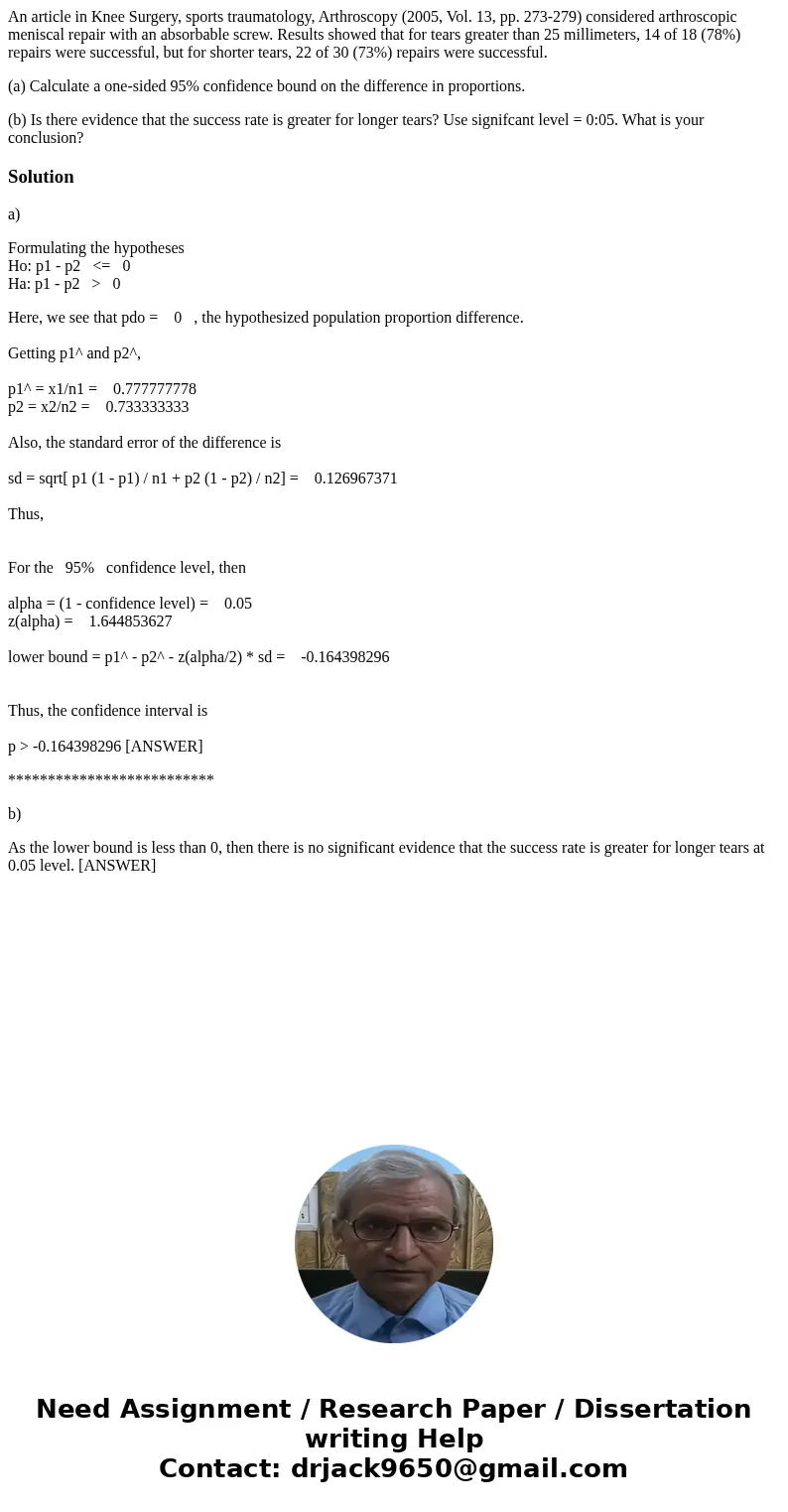An article in Knee Surgery sports traumatology Arthroscopy 2
An article in Knee Surgery, sports traumatology, Arthroscopy (2005, Vol. 13, pp. 273-279) considered arthroscopic meniscal repair with an absorbable screw. Results showed that for tears greater than 25 millimeters, 14 of 18 (78%) repairs were successful, but for shorter tears, 22 of 30 (73%) repairs were successful.
(a) Calculate a one-sided 95% confidence bound on the difference in proportions.
(b) Is there evidence that the success rate is greater for longer tears? Use signifcant level = 0:05. What is your conclusion?
Solution
a)
Formulating the hypotheses
Ho: p1 - p2 <= 0
Ha: p1 - p2 > 0
Here, we see that pdo = 0 , the hypothesized population proportion difference.
Getting p1^ and p2^,
p1^ = x1/n1 = 0.777777778
p2 = x2/n2 = 0.733333333
Also, the standard error of the difference is
sd = sqrt[ p1 (1 - p1) / n1 + p2 (1 - p2) / n2] = 0.126967371
Thus,
For the 95% confidence level, then
alpha = (1 - confidence level) = 0.05
z(alpha) = 1.644853627
lower bound = p1^ - p2^ - z(alpha/2) * sd = -0.164398296
Thus, the confidence interval is
p > -0.164398296 [ANSWER]
**************************
b)
As the lower bound is less than 0, then there is no significant evidence that the success rate is greater for longer tears at 0.05 level. [ANSWER]

 Homework Sourse
Homework Sourse